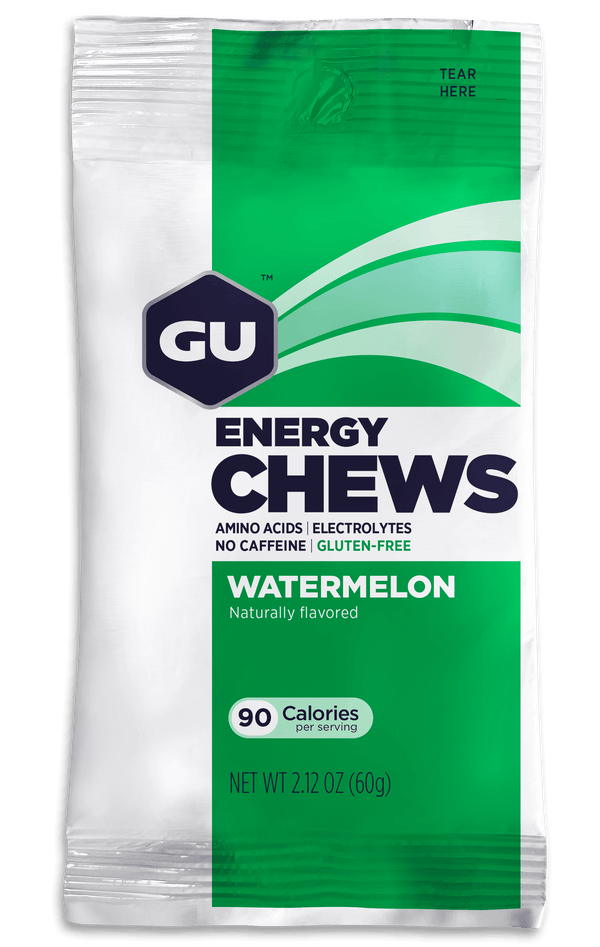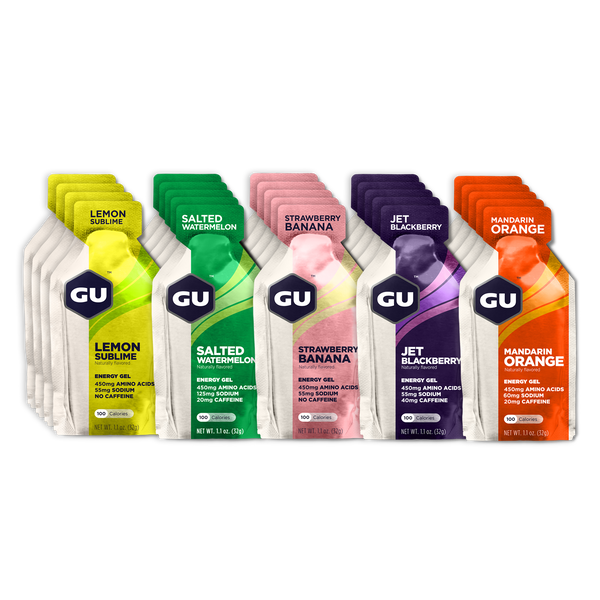On October 12th in Vienna, Austria, one runner did something that many thought would not happen for decades… or even ever.
Eliud Kipchoge cemented his status as the world’s greatest marathoner by running 26.2 miles in under 2 hours. With the assistance of Olympic-level pacers, innovative technology*, and a whole world watching, Kipchoge ran 26.2 miles in 1:59:40. For reference, that’s 4:35 per mile. The current world record for the marathon (26.2 miles) is 2:01:39, set by Kipchoge in 2018. While his sub-2 hour marathon run didn't qualify for a world record, it had a bigger goal: break human limits.
Let’s take a moment to explore what it takes to defy the current limits of human physiology. Obviously, it takes training, lots of miles, genetic ability… But when the stakes are this high, technology plays a huge role in the ultimate success (or failure) of the attempt. Shoe material (he wore a prototype Nike carbon-plated shoe that has since been banned), ground-surface, elevation, and wind resistance were carefully controlled, as were what the athletes ate and drank. While we might struggle a bit to understand the physics behind ground-force reactions and friction coefficients… we do know a thing or two about fuel and hydration!
HERE’S WHAT WE KNOW
Eating is Training – this is a concept we stand behind with every event-specific nutrition plan we create. What does that mean? It means training with your race nutrition strategy is just as important as the running, stretching, and strength training you do daily. Your body adapts to stress, which helps it grow and get stronger, and the digestive system is no exception to this rule.
STRENGTH AND ENDURANCE TRAINING… FOR THE GUT
It’s estimated that 30-50% of endurance athletes are negatively affected by gastrointestinal issues during performance (Jeukendrup, 2017). The harder you are running and the longer you go, the more likely it is that your stomach might revolt. For Eliud Kipchoge attempting to run a sub 2-hour marathon, a bad stomach will definitely mean the difference between 1:59:59 and 2:00:01.
Here’s a short list of what the Kipchoge’s digestive system is up against:
- Reduced blood flow to the gut and stomach
- Slower gastric emptying rate (i.e. how quickly stuff in the stomach gets into the small intestine)
- High concentrations of simple sugars
- Too much fat, fiber, or protein in the prerace meal
- Dehydration
- Too much caffeine
- Over fueling (too many carbs/calories at once)
- Stress or anxiety
The good news? You can train your gut. And you can be sure that the Kipchoge and his crew have carefully practiced consuming fuel and hydration during training. Most GI issues can be overcome both by training one’s nutrition strategy and by using the right combination of nutrients, delivered in the appropriate form at the right time.
WHAT DOES “RIGHT NUTRITION” AT THE “RIGHT TIME” MEAN?
For a high-intensity and long-duration activity like running a marathon in under two hours, the short answer is ROCTANE Energy Drink Mix. This is one of our favorite products for hard race-day efforts. For Kipchoge, it would deliver the perfect combination of carbohydrates for energy, amino acids for enhanced performance and muscle protection, electrolytes to aid hydration, and caffeine.
NUTRITION TECHNOLOGY
Shoes are lighter and faster, watches are smarter, clothes are cooler… and sports drinks hydrate and energize better. ROCTANE Energy Drink Mix has evolved to meet athletes’ need for convenient, fast, effective, and tasty hydration and energy. That’s what makes it the perfect fuel choice for the sub-2-hour marathon attempt (or any other “A race” for that matter).
THE RIGHT STUFF: NOT ALL CARBS ARE CREATED EQUAL
The body stores carbohydrates in the form of glycogen both in the liver and in muscle tissue. This is a limited energy reserve, and most people, depending on diet and body size, can only store about 1600-2000 Calories worth of glycogen. When running a marathon at the pace Kipchoge will need to break the sub 2-hour record (4:35 per mile), glycogen stores (and hence energy) will become a limiting factor if not strategically replenished.
Enter the carbohydrate equation. For a long time, it was thought that the most an athlete could effectively oxidize (use for energy) was limited to 60 grams of carbohydrate per hour, or roughly 1 gram per minute of exercise. Despite attempts to increase this limit by providing more carbohydrate, the body only seemed capable of using about 60 grams per hour. However, these early studies were largely based on glucose-only solutions. It wasn’t until researchers started using multiple carbohydrate sources (glucose + fructose) that everything changed. Glucose is absorbed in the small intestine by specific transporters that become saturated at a rate of about 60 g glucose per hour, meaning carbohydrate uptake slows down at this point, much like a traffic jam on the highway.
Fructose, on the other hand, is absorbed via a completely different and non-competing transporter, which allows the transit of fructose into the bloodstream at a rate of about 30 g per hour. In the traffic jam analogy, the fructose transporter pathway would be the equivalent of having an express lane just for fructose that bypasses the glucose backup. Hence, when the two are combined (glucose at 60g/hr + fructose at 30g/hr) they increase total peak carbohydrate oxidation to about 90 g/hour.
Put simply: more carbs/hour = more calories/hour = more energy = enhanced endurance performance.
Another benefit of including multiple carbohydrate sources is the ability to have both fast and slow release energy sources. While glucose is rapidly absorbed and utilized, having a high glycemic response, fructose takes longer to absorb and metabolize, providing more of a prolonged-release energy. The two combined provide a one-two punch of both a rapid and sustained energy release.
OSMOLALITY AND GASTRIC EMPTYING RATE
When working hard and sweating profusely, hydration strategy becomes crucial. As little as 2% dehydration can impair performance, and for the sub 2-hour record, that could make or break this attempt. One important yet often overlooked variable when considering hydration strategy is osmolality, or the relative number of particles dissolved in a liquid solution. The higher the osmolality, generally the shower the gastric emptying rate, meaning it takes longer it takes for ingested nutrients and fluids to make it into the blood stream. Hypotonic solutions, or those that are less concentrated than body fluids, empty quickly from the stomach into the small intestine where they can be absorbed into the bloodstream.
ROCTANE Energy Drink Mix was formulated to be hypotonic even while delivering 250 calories of energy (osmolality of ~225 mOsm compared to human physiological osmolality of ~ 300 mOsm) so it is rapidly emptied from the stomach and encourages speedy replenishment of both fluids and energy. Maltodextrin, which is long chains of glucose units linked together like cars on a train, delivers glucose quickly but is high in molecular weight, so it doesn’t increase osmolality the way free glucose does (fewer total number of particles in solution). We use this feature to our advantage, keeping glucose delivery fast, and osmolality low. Having a lower osmolality also decreases the risk of GI distress.
MORE OF THE RIGHT STUFF… AT THE RIGHT TIME
Caffeine: Long known as an endurance ergogenic aid, caffeine increases alertness and mental focus, delays fatigue, reduces pain perception during exercise, and enhances fat burning to spare precious glycogen stores.
Electrolytes: Sodium is the primary electrolyte lost in sweat, and it is crucial for maintaining proper fluid balance and plasma volume. Adding electrolytes to a sports drink also increases the urge to drink and overall palatability, to help ensure the runners want to continue to drink.
FASTER, SMARTER NUTRITION FOR SUB 2 OR WHATEVER YOUR GOAL MAY BE
That’s a lot of information to digest! (See what we did there?) But here’s what you need to know about ROCTANE Energy Drink Mix:
- It has multiple carbohydrate sources for maximal carbohydrate delivery plus a quick and sustained energy release.
- It’s hypotonic to ensure rapid gastric emptying and minimizes the risk of GI distress.
- You’ll get branched chain amino acids (BCAAs) for an additional fuel source to hard-working muscles and to minimize muscle breakdown during exercise.
- Taurine and beta-alanine will enhance performance by supporting the heart’s ability to pump blood to muscles and the muscles’ ability to handle acid buildup.
- Caffeine staves off mental fatigue and reduces perceived effort.
To run sub-2, you’re going to need all of these nutritional components in a portable and tasty drink! If your goals are less super-human, maybe qualify for the Boston Marathon or ride your first century on a bike, you still need to provide your body with the tools for optimum performance!
REFERENCE:
Jeukendrup, A. E. (2017). Training the Gut for Athletes. Sports Medicine, 1-10.r

































